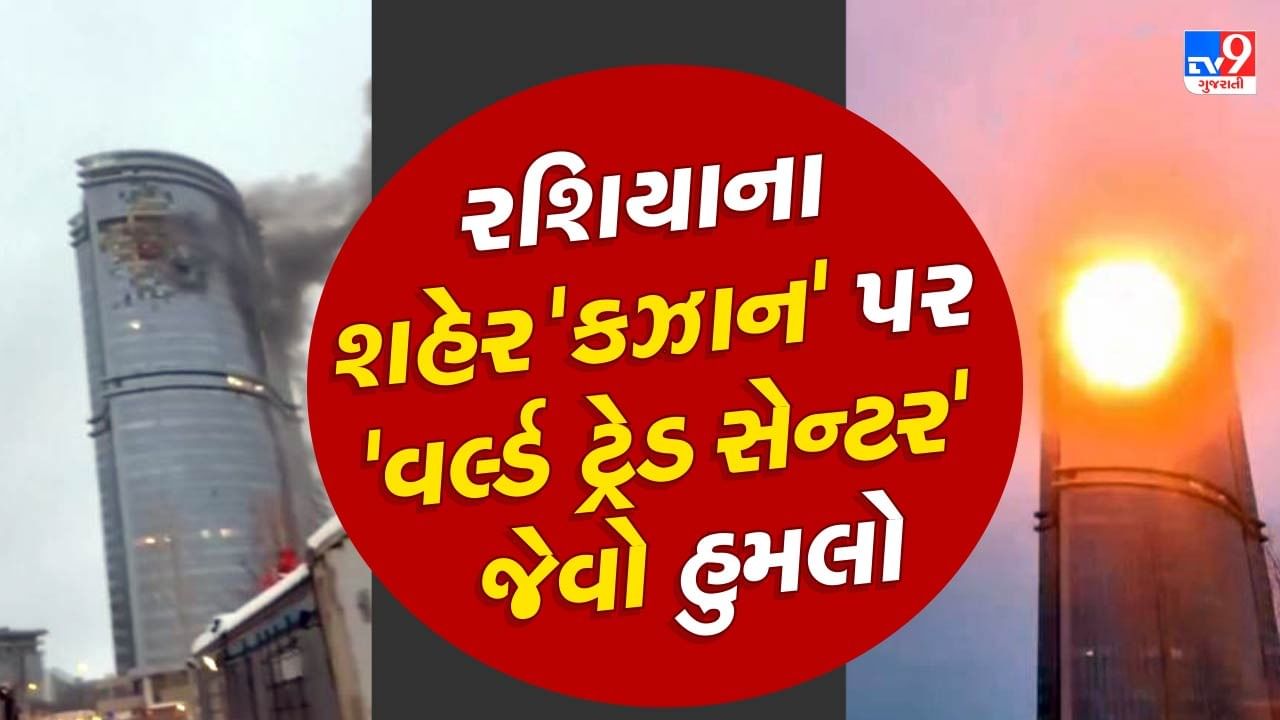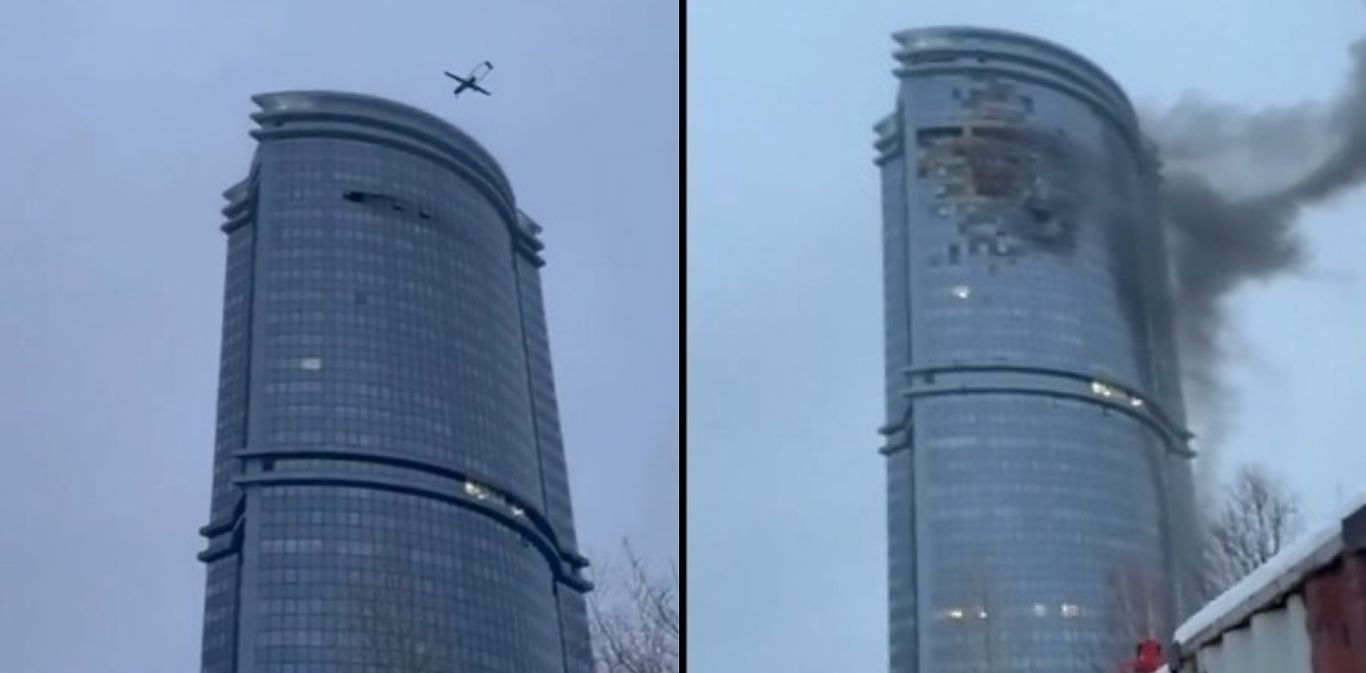Kazan drone attack: The recent incident in Kazan, involving suspected drone strikes, has raised significant concerns regarding national security and technological advancements in warfare. This event demands a thorough examination of the circumstances surrounding the attack, the technological capabilities employed, and the potential implications for regional stability. We will delve into the details, exploring the potential actors, the technological aspects of the attack, and the resulting geopolitical ramifications.
The recent drone attack on Kazan highlights the increasing vulnerability of civilian areas to unmanned aerial vehicles. This incident underscores the need for robust counter-drone measures, especially considering the potential for similar incidents, such as the unfortunate drone show accident which demonstrated the risks associated with even well-intentioned drone operations. Ultimately, improving drone safety protocols is crucial to preventing future attacks like the one in Kazan.
This analysis will cover the reported damage and casualties, timeline of events, potential drone types and payloads, attribution and responsibility, and the subsequent security and defense responses. We will also explore the public reaction, media coverage, and the broader geopolitical implications of this incident, providing a comprehensive understanding of this significant event.
The Kazan Drone Attack: An Analysis

The alleged drone attack on Kazan, a significant city in Russia, sparked considerable international attention. This event raises questions about the evolving nature of warfare, the vulnerability of urban centers to drone technology, and the potential for escalation in regional conflicts. This analysis delves into various aspects of the incident, from the technological capabilities employed to the geopolitical implications and the subsequent responses.
The Event: Kazan Drone Attack Overview
Reports emerged of a series of drone strikes targeting Kazan on [Insert Date of Alleged Attack]. While details remain somewhat fragmented and official confirmation is pending, initial reports suggest [Insert brief description of the targets, e.g., government buildings, infrastructure]. The reported damage included [Insert details of damage, e.g., minor structural damage, fires, etc.], and there were [Insert details of casualties, e.g., reports of injuries, fatalities].
The timeline of events began with the initial reports surfacing on [Insert Time of First Reports], followed by [Insert details of subsequent developments, e.g., official statements, investigations launched]. The situation remains fluid, and investigations are ongoing to ascertain the full extent of the damage and the precise sequence of events.
Technological Aspects of the Attack, Kazan drone attack
Several types of drones could potentially have been used in the attack, ranging from commercially available models modified for military purposes to more sophisticated, purpose-built UAVs (Unmanned Aerial Vehicles). The size of the drone(s) would influence their payload capacity, range, and stealth capabilities. Smaller drones might be more easily concealed and launched, while larger ones could carry heavier payloads but are more easily detected.
Navigation could have involved GPS guidance, pre-programmed flight paths, or even manual control via remote operators. The potential payloads could include explosives, incendiary devices, or even chemical or biological agents, depending on the attacker’s objectives and capabilities.
| Drone Model (Example) | Size/Weight | Range | Payload Capacity |
|---|---|---|---|
| Commercial Quadcopter (Modified) | Small, Lightweight | Limited (Several Kilometers) | Small Explosive Device |
| Military-Grade UAV | Medium to Large | Extended (Hundreds of Kilometers) | Larger Explosive Payload, Reconnaissance Equipment |
| Fixed-Wing UAV | Medium to Large | Very Long Range | High Explosive Payload, Surveillance Equipment |
| Loitering Munition | Small to Medium | Variable, depends on model | Shaped Charge Warhead |
Attribution and Responsibility

Determining responsibility for the attack is crucial. Several actors could potentially be considered, including [List potential actors, e.g., national or international terrorist groups, state-sponsored actors, dissident groups]. Their motives would vary; some might aim to destabilize the region, others might seek to demonstrate capability, or target specific individuals or institutions. At this stage, the lack of definitive evidence makes it difficult to definitively attribute responsibility.
Recent reports detail a concerning escalation in the use of drones for attacks, with the incident in Kazan highlighting a new level of sophistication. For more detailed information on this specific event, you can refer to this comprehensive report on the kazan drone attack. Understanding the Kazan drone attack is crucial for assessing future threats and developing effective countermeasures against similar incidents.
Any claims of responsibility made by specific groups require careful verification and investigation.
Geopolitical Implications
The attack has the potential to significantly impact regional stability. [Insert details on potential impact, e.g., increased tensions between Russia and neighboring countries, potential for retaliatory actions]. The reactions of involved governments and international organizations will be closely watched, as will the implications for ongoing conflicts or tensions in the region. A scenario of escalation could involve further attacks, increased military deployments, and potential international involvement.
Conversely, de-escalation might involve diplomatic efforts, investigations, and measures to prevent future attacks.
Security and Defense Responses
Improving security measures to prevent future drone attacks in Kazan is paramount. Existing security measures likely include [Insert examples of existing security measures, e.g., air defense systems, surveillance technologies]. However, the effectiveness of current counter-drone technologies and strategies needs evaluation. Improvements could include investing in more advanced counter-drone systems, enhancing surveillance capabilities, and implementing stricter regulations on drone ownership and operation.
Recommendations for enhancing drone defense capabilities in similar urban areas might include integrating AI-powered detection systems, establishing no-fly zones, and training security personnel in counter-drone tactics.
Public Reaction and Media Coverage

The public’s reaction to the attack has likely been one of [Insert details of public reaction, e.g., shock, fear, anger]. Media coverage of the event has varied, with [Insert details on media coverage, e.g., some outlets focusing on the damage, others on the potential perpetrators]. Comparisons with other similar incidents reveal [Insert comparisons, e.g., similarities and differences in the scale of the attack, the response, etc.].
Social media has played a significant role in shaping public perception and disseminating information, often amplifying both factual reports and unsubstantiated rumors.
Visual Representation of the Attack (Illustrative)
Imagine a scene at dusk. The sky, a bruised purple, is pierced by the faint whine of a drone motor. The drone, a dark, almost invisible silhouette against the twilight, approaches a government building. Its metallic frame gleams briefly under a streetlight. A sudden flash, a deafening boom, and a plume of smoke and debris erupt from the target building.
The scene is filled with the sounds of shattering glass, sirens wailing in the distance, and the terrified screams of onlookers. The aftermath shows the building partially destroyed, emergency responders rushing to the scene, and a pall of smoke hanging heavy in the air. The faces of those present are etched with shock and grief. The scene is a stark testament to the destructive power of modern technology and the vulnerability of urban environments to such attacks.
The Kazan drone attack serves as a stark reminder of the evolving nature of modern conflict and the vulnerabilities of even heavily defended urban areas. Understanding the technological aspects of the attack, the potential actors involved, and the resulting geopolitical implications is crucial for developing effective countermeasures and mitigating future risks. The incident highlights the need for continuous advancements in drone defense technologies and a comprehensive reassessment of security protocols to safeguard against similar attacks.
The recent drone attack on Kazan highlights the evolving nature of warfare and the potential for unmanned aerial vehicles to be used in both military and civilian contexts. This contrasts sharply with the more peaceful applications of drones, such as the spectacular light shows, like the one showcased at the orlando drone show , which demonstrates the technology’s potential for entertainment.
The Kazan incident serves as a sobering reminder of the dual-use capabilities of this rapidly advancing technology.
Further investigation and international cooperation are vital to deter future incidents and ensure regional stability.
Popular Questions
What were the immediate responses to the attack?
Initial responses included emergency services deploying to the affected areas, investigations launched by authorities, and increased security measures implemented in Kazan.
What types of damage were reported?
The extent of damage varied depending on the reports, but some accounts mentioned structural damage to buildings and potential injuries.
Has anyone claimed responsibility for the attack?
At the time of this writing, no group or individual has publicly claimed responsibility for the attack.
What are the long-term implications for Russia’s security posture?
The attack likely prompts a reassessment of Russia’s drone defense capabilities and could lead to increased investment in counter-drone technologies and improved security protocols.